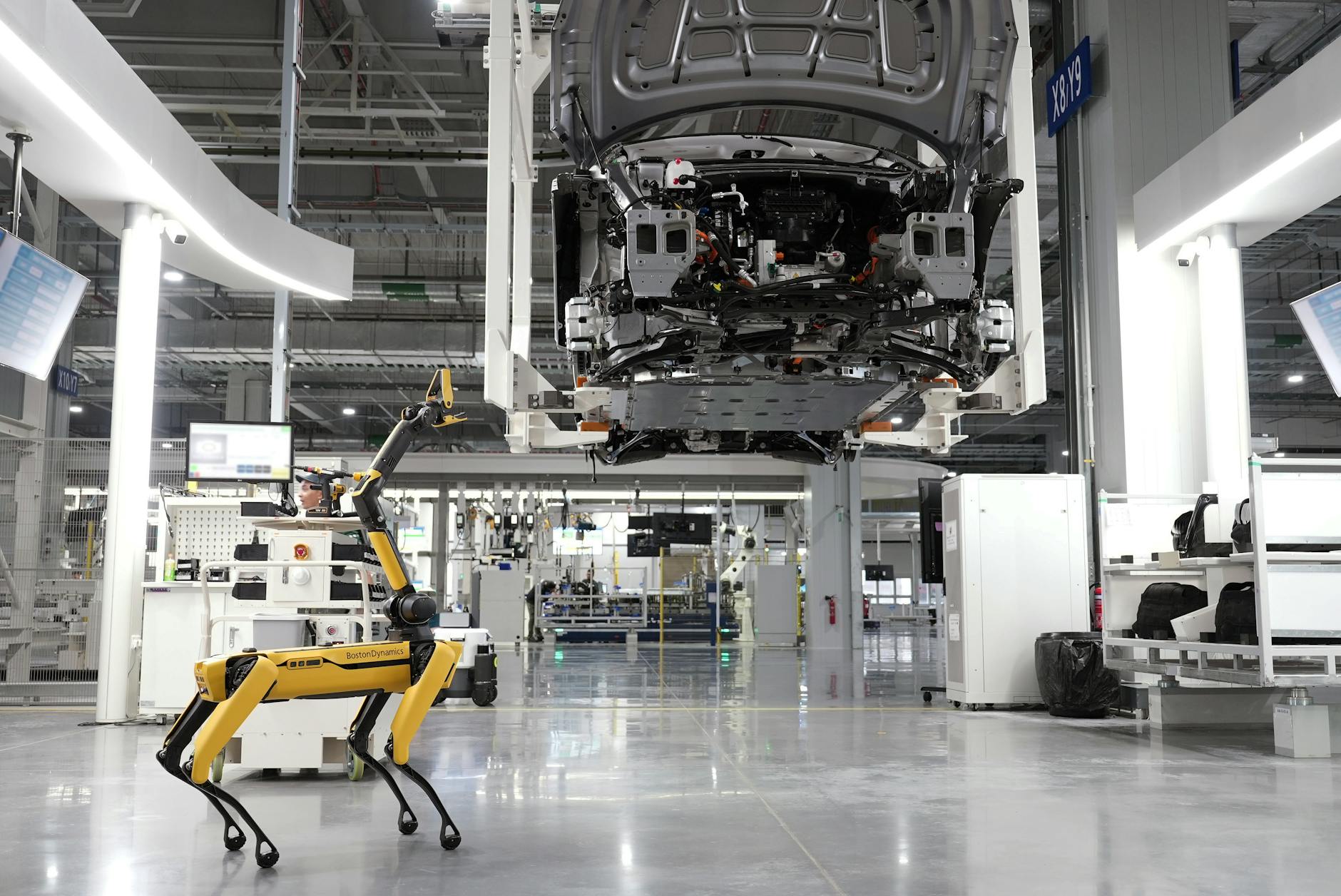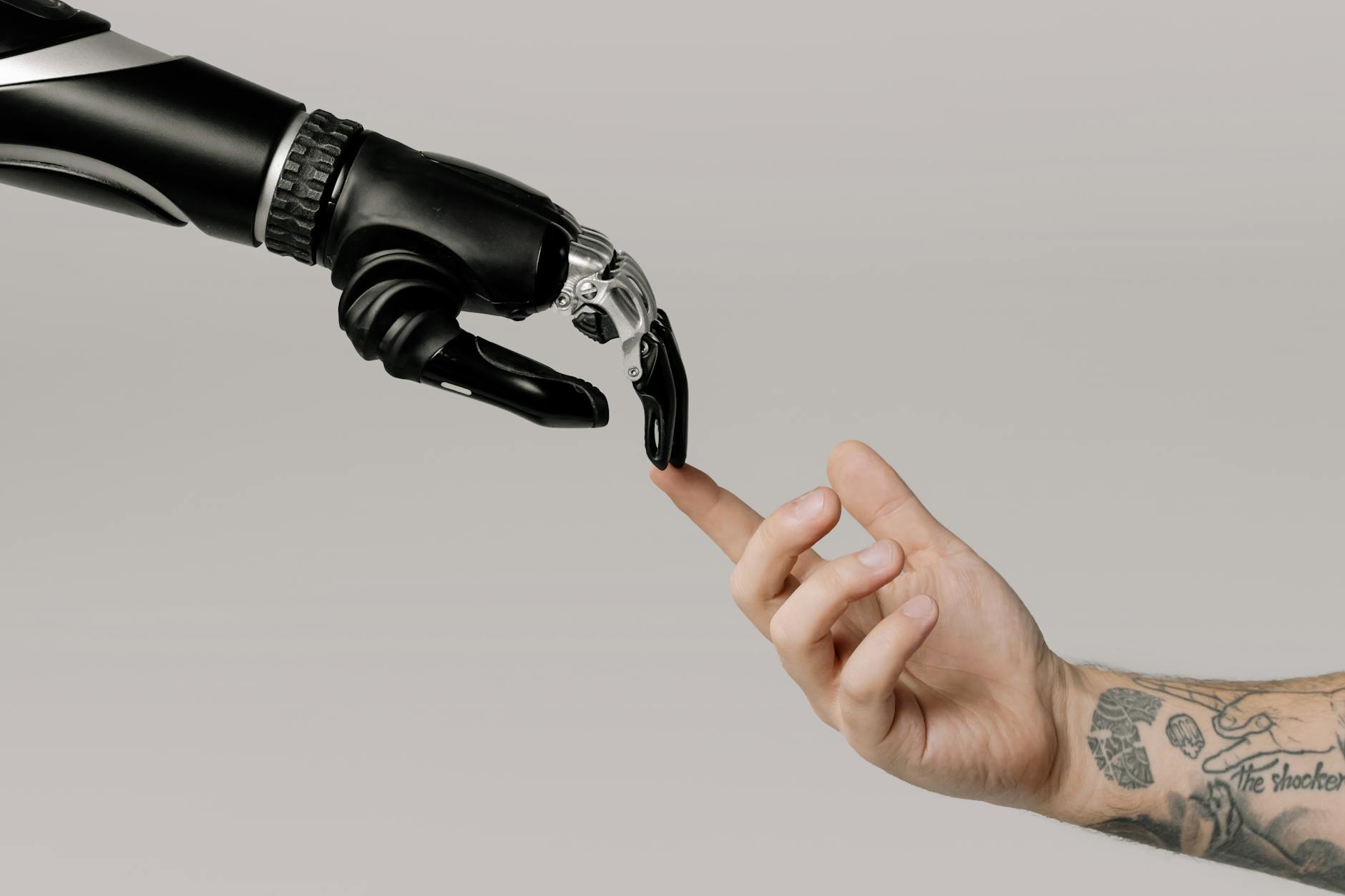AI and PM, Project Management Articles
Generative AI – What are we dealing with?
🤖 Artificial Intelligence has been a part of our lives for years, quietly revolutionizing how we interact with technology. From face recognition unlocking our smartphones to self-driving cars navigating city streets, AI has steadily woven itself into the fabric of our daily routines. But now, a new player has entered the game, promising to shake up the AI landscape like never before: Generative AI.
Imagine a world where AI doesn’t just recognize or react, but creates. A world where machines can write novels, compose symphonies, and even dream up new scientific theories. This isn’t science fiction—it’s the dawn of the Generative AI era. As this groundbreaking technology continues to evolve at breakneck speed, we’re left wondering: Where will Generative AI lead us in the future? 🚀
In this blog post, we’ll embark on a journey through the fascinating world of Generative AI. We’ll explore its origins, current applications, and potential future impacts. From understanding the AI evolution to preparing for a Generative AI-driven future, we’ll uncover the promises and pitfalls of this transformative technology. So, buckle up as we dive into the exciting realm of Generative AI and its implications for our world!
Understanding AI Evolution

A. Early AI applications in recognition systems
Early AI applications in recognition systems laid the foundation for many of today’s advanced technologies. These systems primarily focused on pattern recognition and classification tasks, enabling machines to identify and categorize various inputs.
Key applications of early AI recognition systems include:
- Image recognition
- Speech recognition
- Handwriting recognition
- Facial recognition
| Application | Description | Example Use Case |
|---|---|---|
| Image recognition | Identifying objects, scenes, or patterns in digital images | Security systems, medical imaging |
| Speech recognition | Converting spoken words into text | Virtual assistants, transcription services |
| Handwriting recognition | Interpreting handwritten text | Digital note-taking, document digitization |
| Facial recognition | Identifying or verifying individuals based on facial features | Biometric authentication, law enforcement |
These early AI applications relied heavily on rule-based systems and statistical models, which had limitations in terms of accuracy and adaptability. However, they paved the way for more sophisticated AI techniques and demonstrated the potential of machines to perform human-like cognitive tasks.
B. Development of autonomous vehicles
The development of autonomous vehicles represents a significant leap in AI applications. This field combines various AI technologies to create self-driving cars capable of navigating complex road environments without human intervention.
Key components of autonomous vehicle AI:
- Perception systems
- Decision-making algorithms
- Control systems
- Mapping and localization
C. Limitations of traditional AI approaches
Despite their successes, traditional AI approaches faced several limitations:
- Lack of adaptability
- Difficulty in handling complex, unstructured data
- Reliance on human-defined rules and features
- Limited ability to generalize across different tasks
These limitations prompted researchers to explore new approaches, leading to the development of machine learning and deep learning techniques that form the basis of modern AI systems, including generative AI.
The Rise of Generative AI

A. Defining generative AI
Generative AI refers to artificial intelligence systems capable of creating new content, such as text, images, audio, or video, that closely resembles human-created work. Unlike traditional AI, which focuses on recognizing patterns or making decisions based on existing data, generative AI can produce original outputs.
B. Key technologies behind genAI
Several key technologies power generative AI:
- Neural Networks
- Deep Learning
- Transformer Architecture
- Generative Adversarial Networks (GANs)
| Technology | Description | Application |
|---|---|---|
| Neural Networks | Simulates brain function | Pattern recognition |
| Deep Learning | Multi-layered neural networks | Complex data processing |
| Transformer Architecture | Handles sequential data | Language models |
| GANs | Two competing neural networks | Image generation |
C. Breakthroughs in natural language processing
Natural Language Processing (NLP) has seen remarkable advancements with generative AI. Models like GPT-3 can now:
- Generate human-like text
- Translate between languages
- Summarize long documents
- Answer questions contextually
These breakthroughs have revolutionized how we interact with machines, making communication more natural and intuitive.
D. Image and video generation capabilities
Generative AI has also made significant strides in visual content creation:
- AI can now generate photorealistic images from text descriptions
- Video synthesis allows for the creation of short clips or even entire movies
- Style transfer techniques enable the application of artistic styles to existing images
These capabilities are transforming industries such as entertainment, advertising, and digital art. As we explore the current applications of generative AI, we’ll see how these technologies are being implemented across various sectors.
Current Applications of Generative AI

A. Content creation and marketing
Generative AI has revolutionized content creation and marketing strategies. These advanced algorithms can produce high-quality, engaging content across various formats, including:
- Blog posts
- Social media updates
- Product descriptions
- Email newsletters
- Video scripts
One of the key advantages of using generative AI in content creation is its ability to personalize content at scale. This technology can analyze user data and preferences to create tailored messages that resonate with specific audience segments.
| Traditional Content Creation | AI-Powered Content Creation |
|---|---|
| Time-consuming | Rapid production |
| Limited scalability | Highly scalable |
| Inconsistent quality | Consistent quality |
| Manual personalization | Automated personalization |
B. Software development assistance
In the realm of software development, generative AI has become an invaluable tool for programmers. It can:
- Generate code snippets
- Autocomplete complex functions
- Debug existing code
- Suggest optimizations
These capabilities not only accelerate the development process but also help reduce errors and improve overall code quality. As a result, developers can focus on higher-level problem-solving and innovation rather than getting bogged down in repetitive coding tasks.
C. Scientific research and drug discovery
Potential Future Impacts of Generative AI

A. Revolutionizing knowledge work
Generative AI is poised to transform the landscape of knowledge work across various industries. By automating routine tasks and enhancing decision-making processes, AI will enable professionals to focus on higher-value activities. Here’s how generative AI is expected to revolutionize knowledge work:
- Automated report generation
- Intelligent data analysis
- Personalized learning experiences
- Enhanced problem-solving capabilities
| Area | Current State | Future with Generative AI |
|---|---|---|
| Data Analysis | Time-consuming manual processes | Real-time insights and predictive analytics |
| Content Creation | Human-driven with limited automation | AI-assisted creation with human refinement |
| Customer Service | Scripted responses and limited personalization | Dynamic, context-aware interactions |
| Research | Labor-intensive literature reviews | AI-powered synthesis and hypothesis generation |
B. Enhancing human-AI collaboration
As generative AI continues to evolve, we’ll see a shift towards more seamless collaboration between humans and AI systems. This partnership will leverage the strengths of both, leading to unprecedented levels of productivity and innovation.
C. Accelerating scientific discoveries
Generative AI has the potential to dramatically speed up the pace of scientific research and discovery. By analyzing vast amounts of data and generating novel hypotheses, AI can help researchers identify promising avenues for investigation more quickly and efficiently.
D. Transforming entertainment and media
The creative industries are set for a major shake-up with the advent of generative AI. From personalized content creation to immersive virtual experiences, AI will redefine how we consume and interact with media. This transformation will open up new possibilities for storytelling and audience engagement, pushing the boundaries of creativity and entertainment.
Challenges and Ethical Considerations

Job displacement and economic shifts
As generative AI continues to advance, one of the most pressing challenges is the potential for widespread job displacement. AI systems are becoming increasingly capable of performing tasks that were once thought to be exclusively human domains. This shift could lead to significant economic changes:
- Industries at risk:
- Creative fields (writing, design, art)
- Customer service
- Data analysis and interpretation
- Certain aspects of programming and software development
| Potential Positive Impacts | Potential Negative Impacts |
|---|---|
| Increased productivity | Job losses |
| New job creation | Income inequality |
| Economic growth | Skills gap |
To mitigate these challenges, it’s crucial for governments, businesses, and educational institutions to collaborate on:
- Reskilling and upskilling programs
- Developing new economic models
- Implementing supportive policies for affected workers
Data privacy and security concerns
With generative AI’s reliance on vast amounts of data, privacy and security issues become paramount. Key concerns include:
- Data collection practices
- Storage and protection of sensitive information
- Potential for data breaches and misuse
To address these issues, organizations must:
- Implement robust data protection measures
- Ensure transparency in data usage
- Comply with evolving data privacy regulations
Bias and fairness in AI-generated content
Generative AI systems can inadvertently perpetuate or amplify existing biases present in their training data. This raises important ethical questions about fairness and representation in AI-generated content. To combat this:
- Diverse and representative training data is essential
- Regular audits for bias should be conducted
- Transparent AI decision-making processes must be implemented
Intellectual property rights
As AI systems become more adept at creating original content, questions arise about ownership and copyright. Key considerations include:
- Attribution of AI-generated works
- Potential infringement on existing copyrights
- Defining authorship in collaborative human-AI creations
Addressing these challenges will require updates to intellectual property laws and the development of new frameworks for AI-generated content.
Preparing for a Generative AI-Driven Future

Developing new skills and competencies
As we look towards a future shaped by Generative AI, it’s crucial to adapt our skill sets. Here are key areas to focus on:
- AI literacy
- Critical thinking
- Creativity
- Ethical reasoning
- Adaptability
| Skill | Importance | Examples |
|---|---|---|
| AI literacy | High | Understanding AI basics, prompt engineering |
| Critical thinking | Very High | Evaluating AI outputs, identifying biases |
| Creativity | High | Innovative problem-solving, AI-human collaboration |
| Ethical reasoning | Very High | Assessing AI implications, making responsible decisions |
| Adaptability | High | Embracing continuous learning, flexible career planning |
Establishing regulatory frameworks
To ensure responsible AI development, we need robust regulatory frameworks. Key considerations include:
- Data privacy and protection
- Algorithmic transparency
- Accountability measures
- Ethical guidelines for AI development and deployment
Fostering responsible AI development
Responsible AI development is crucial for a sustainable AI-driven future. This involves:
- Prioritizing ethical considerations in AI design
- Implementing bias detection and mitigation strategies
- Ensuring diverse representation in AI development teams
- Regular audits and impact assessments of AI systems
Encouraging interdisciplinary collaboration
The complex nature of Generative AI necessitates collaboration across various fields. This includes:
- Bringing together technologists, ethicists, and policymakers
- Integrating AI education into diverse academic disciplines
- Promoting cross-sector partnerships for AI research and development
As we move forward, these preparatory steps will be crucial in shaping a future where Generative AI benefits society while minimizing potential risks.

Generative AI represents a significant leap forward in artificial intelligence, building upon earlier advancements like recognition systems and autonomous vehicles. As we’ve explored, this technology has already found applications across various industries, from content creation to scientific research. Its potential to revolutionize how we work, create, and solve problems is immense.
However, with great power comes great responsibility. As we embrace the possibilities of generative AI, we must also address the ethical concerns and challenges it presents. By staying informed, adapting our skills, and actively participating in shaping AI policies, we can work towards a future where generative AI enhances human capabilities rather than replacing them. The journey ahead is exciting, and it’s up to us to steer this powerful technology towards a future that benefits all of humanity.

